




























Glenn Border of Borderline Events is preparing for a night of entertainment with his Back to the 80s-themed party on Saturday, May 4, at Coronation Hall, Waipu.


“We figured we could do with a bright start to winter,” says Glenn.
“Given that the Brynderwyns are closed, we thought we’d create a party in the village to lighten the mood.
“The 80s genre is so popular among the demographic of people here, it’ll be a great night to get dressed up and have a really silly, fun time with friends.”
Glenn has called on the live band Frisky Business, which specialises in 80s-themed music, such as Duran Duran, Cyndi Lauper and Michael Jackson.

“Frisky Business will be performing live on stage from 8pm until midnight but we may open early. The wonderful, effervescent Jenni Carr will be the emcee
“Logan MacLean will have really yummy 80s-themed food for purchase. We’re excited to have things like oldschool shrimp cocktails and hedgehogs made with cheese, pickled onions and pineapple.”
“We are creating an eating lounge and keeping it local with the licensed bar selling drinks, including McLeods beer products as well as standard wines, Pals ciders and premix drinks.
“If you have ever been captivated by movies like Back to the Future and Dirty Dancing it will be very entertaining. A big part of the fun is getting to dress up like Eddie van Halen, Kiss and George Michael.
“It’s all about headbands and leg warmers, bright and fluoro colours and having a really fun night”
running the evening with audience interactive games like Twister and some great prizes up for grabs.”
There will be ultraviolet face painting and the entrance will be decked out in black UV lights to illuminate the bright lime greens, whites, pinks and other fluorescent colours.
“There’s also a shuttle bus with cheap tickets for locals to get themselves home safely. Tickets can be purchased on eventfinda.co.nz or at the door if there’s space available.”
With the retro theme, there will be decorations, such as mirror balls and Rubik’s cubes throughout the hall.
“There are so many 80s stars you can become your version of, and people can dance the night away with Jenni zooming around on her retro roller skates.
“It’s all about headbands and leg warmers, bright and fluoro colours and having a really fun night. I say: ‘May the fourth be with you’. You may even decide to enter into the next Stars in Your Eyes competition.
“Our local area has some great indoor and outdoor venues and I plan to do more events in the future to bring some joy to the community. Tickets for Back to the Future, along with shuttle tickets are available at eventfinda.co.nz.”
The Wellsford RSA team is encouraging people from far and wide to attend the local Anzac Day services and remember those who fought for our freedom.
“We’re holding the dawn service and then returning to the club for a sausage and hot drink,” says Shirley Blakemore.
“At 9am, we’re having a champagne breakfast, but you need to book for that one.”
Shirley and her husband, Terry, have volunteered at the Wellsford RSA for the last 28 years.
“I say to people it’s all well and good when you stand up and recite the Ode of Remembrance and say we will remember them, but how are you remembering them?
“The Wellsford School students wrote poems, did works of art and came and placed the white crosses out the front of our RSA at 1 Olympus Road. It looks beautiful.
“To the people who served we say thank you for your support and helping us to keep that memory alive. We have total respect.
“We put on Friday night dinners to encourage people along and have time together. The meals are awesome and
“They help keep the memory alive even though they don’t know they are”
reasonably priced. We often have up to 80 people joining us.”
“You need to do it every day, not just Anzac Day. Those guys and girls made the ultimate sacrifice so we could lead a decent life, and that, to us, is why we volunteer and give up so much of our time.
“Neither of us has any service behind us at all. My dad did but Terry’s dad didn’t, but we feel it’s hugely important to get behind the RSA. Even the service members are not the crux of an RSA, although they are supposed to be. It’s people like Terry and myself who have no service behind us that keep our club alive and we’re forever grateful to those people.
LEE COCURULLO
Whangarei Rentals/ Storage
Shirley and the team also do weddings, funerals, anniversary parties and other events at a reasonable rate.
“We enjoy seeing people socialising. We don’t put on a lot of music because music costs a lot of money, and our patrons just want to come and catch up with friends for a chat.
“We’re looking forward to our Anzac Day dawn service. Some years, we’ve had 500 people, including small children, attending our dawn service. We’d love

people to join us as we remember those who fought in the wars. They help keep the memory alive even though they don’t know they are.”
The Wellsford Anzac parade assembly is at 5.45am at 13 Port Albert Road, with the service commencing at Wellsford Memorial Library at 6am. There will
be a road closure at Port Albert Road, between Davies Road and Rodney Street and at Memorial Lane, between Worker Road and Port Albert Road from 4.45am until 7.15am.
To book the champagne breakfast for $25 a person — text Shirley on 021 884 574. ¢
Such as troublesome bleeding; menopause concerns; abnormal smears; pelvic pain; pain or irritation ‘down there’; fertility issues; non–surgery options for prolapse and bladder problems.
Many of the common problems can be treated with simple minor procedures done either at the clinic or at Kensington Hospital.
The emphasis at the clinic is on making sure women have as much information as possible about their own health on which to base their decisions as to the type of treatment that is best for them.

EMAIL: rentals.whangarei-breambay@century21.co.nz
PHONE: 021 217 6873
OFFICE: 09 439 7575
Jean Johnson Realty
Dr. Rachel Moss, the specialist gynaecologist, can see you to make a thorough gynaecological assessment and discuss options for treatment.
A GP referral can be helpful but is not essential.




Local surfers featured against Aotearoa’s best as Te Ārai Beach hosted the second event of the NZ Surf Series at the recent Aotearoa Surf Pro.
“It was an amazing weekend,” says Aotearoa Surf general manager Che Burnett.
“It was awesome to put Te Ārai’s first-ever surf series competition and see New Zealand’s top surfers battle it out. All the athletes had amazing heats. However, the finals were something of legends. Scoring seven, eight and nines, it was a chase for the title all the way.
“We congratulate the crowned Aotearoa Surf Pros Daniel Farr and Elin Tawharu and everyone who came to the event from athletes to spectators. Watch for more events to come at Te Ārai and from Aotearoa Surf. As a company, we are proud to be part of the surfing community and run events that put surfers on the national and international stage.” ¢
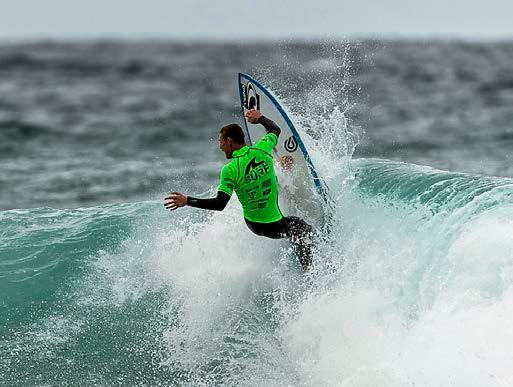





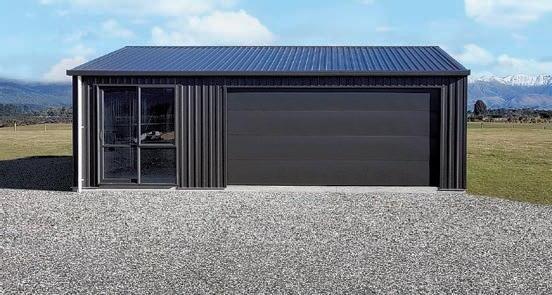


Sustainable Kaipara, in conjunction with the Mangawhai Shed, is preparing for the upcoming Repair Cafe to be held at the Mangawhai Domain on Saturday, April 27, from 9am–noon.
“We are a part of Repair Cafe Aotearoa, which is a member of a global movement of ‘the right to repair’,” says Sustainable Kaipara’s Sarah Bray.
“The movement lobbies manu facturers and governments on legislation around manufacturing items that can be repaired. For instance, mobile phones or toasters have been difficult to repair, and the concept is manufacturers need to make products that are repairable rather than being thrown away.”
“Stephen Mackay and the Mangawhai Shed team are key to the success of the event. They provide all the tools and skills to help save the products. There will be electrical experts, skilled woodworkers and repairers, as well as sewers, on hand to repair clothing and things.
“We saw lots of happy people at our first cafe, with a lovely community vibe”
Sarah says we also need more people in our communities with skills to be able to repair items.
“The cafe concept is you bring the item to be repaired, and while it is being assessed, you enjoy a beverage and muffin. It’s all about avoiding having products end up in the landfill and saving money as well.
“It is thanks to Coastal Homes and ITM Mangawhai for sponsoring this event that we’re able to help people. We held our first Repair Cafe last November, and it was really successful, and people asked for another.
“At the last event, they fixed dining chairs with wobbly legs, old clocks, clothing, toasted sandwich machines and other small appliances. If the team can’t repair an item, they can give their opinion if it’s worth taking elsewhere for evaluation.
“For a lot of people, an evaluation is valuable information as you won’t be wasting your time or finances going elsewhere if it can’t be fixed. Sometimes, wooden items may be too big to be completed on the day, but the shed team does take on projects for a nominal fee.

“We saw lots of happy people at our first cafe, with a lovely community vibe and that showed us how important it was to connect people in a positive way. There were many discussions around the importance of repairing things as none of us want to throw stuff out, but it’s been made so hard and uneconomical that the status quo has been to replace.
“We are looking forward to another positive event. It’s thanks to our sponsors and volunteers who are helping. We ask for a koha if possible to cover the materials as some of the equipment they use is very expensive.”



Follow the Sustainable Kaipara Facebook page for future events or date changes due to weather. ¢
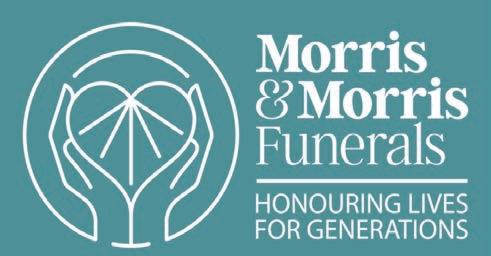
They were one of those houseplants from the 1970s that everyone had sitting on their window sills in flowering glory — the African violet.
At some point, these delightful, small but hardy plants vanished from the modern decor and became out-offashion kitsch memories assigned to the faded pages of old design magazines.
Still, the African violet has remained a quiet, evergreen favourite sitting on the coffee table or near the window in many homes.
Collected from the Usambara Mountains in Tanzania and Kenya and propagated worldwide, this herbaceous species has been developed by horticulturalists into a range of stunning flowering varieties in purple, blue, white, pink and variegated colours.
The dark green leaves are just as attractive. Recent additions of green hues have been cultivated to add to the charm of its blooms.
Given the right care, African violets will flower year-round, and they don’t need a specialised heated greenhouse to grow indoors. However, they do need some regular attention to maintain blooming for most of the year, and it doesn’t need to be rocket science to do it. They need a good light source away from direct sunlight, so a well-lit position on a table near a window is perfect. Turn the pot regularly to provide the plant with even sunlight for photosynthesis. Watering should be done from the bottom to prevent the crown from rotting. Once all the water has been taken up, drain the excess so the plant isn’t left sitting constantly wet. Wet feet mean root rot and, eventually, a dead plant.
African violets, with their furry leaves, also tend to be dust collectors, which in
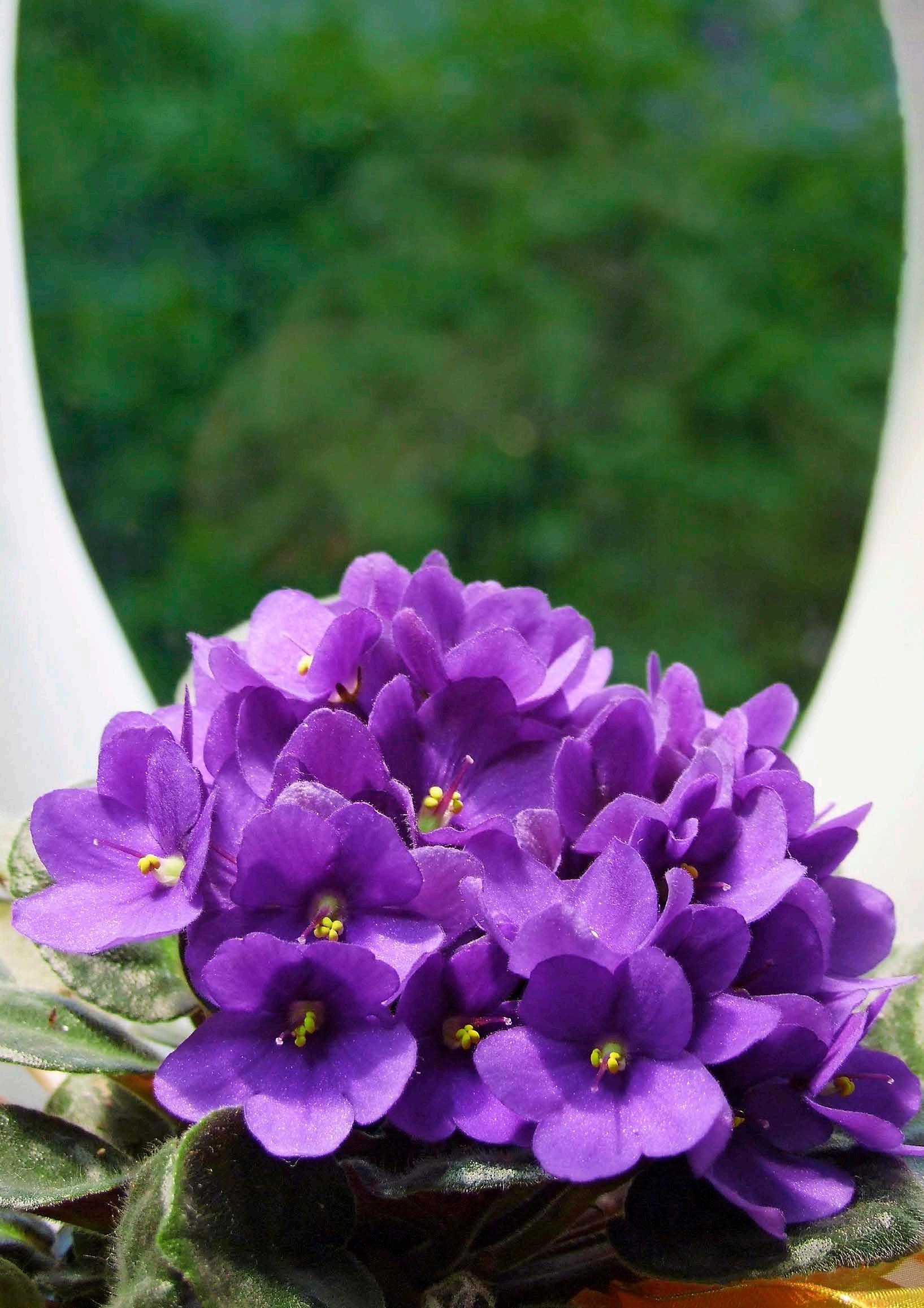
turn affects the leaves and the overall health of the plant. Carefully rinse the outer leaves with lukewarm water with the pot held sideways, which will avoid getting the crown wet. Afterwards, place the plant away from direct sunlight and allow the leaves to dry. The potting mix should be free-draining and without any watering crystals. Allow the plant to dry out slightly between waterings and feed with a weak liquid fertiliser monthly to maintain vigour.
Nurseries are developing new forms and colours each year including miniature varieties in a range of colours that might make this once-popular houseplant grace a few homes again. Look online for specialist nurseries nationwide for advice and available cultivars or talk to your local garden centre professional. ¢


Matua Wiremu Ngatipa and students from Ōtamatea High School and Rodney College proudly represented their communities while performing at the Te Tai Tokerau Secondary Schools Kapa Haka Festival held at Ōkaihau College last week.
“The students worked really hard with a short time frame to learn their new brackets,” says Wiremu. “We have a lot of new kapa haka members, and they did extremely well. The students had three ‘live-in’ sessions to learn and perfect seven items. It was an awesome time — the kids enjoyed being on stage.”
There were 27 groups from around Northland, competing from as far as Mahurangi up to Kaitaia.
“Our school did really well with two performances on the day,” says student Dayshin Para. “I joined kapa haka three years ago as I’m passionate about my
Māori culture and heritage. There’s a lot of hard work to perform and being involved means I learn different aspects of my culture, te reo language and performing arts.
“To learn a new bracket, matua helps us with our form. He is a great teacher and very strict, as he shows us what to do at our practices. We also help make up the songs and actions.’
Dayshin says there are a lot of techniques to learn for the performances.
“We practise at home as well as manage our school work. We put in lots of hours to perfect our sets when we
go out on stage. We love wearing the costumes, as it reflects our heritage and connections to the past and our ancestors.
“When I wear my costume, I feel very proud to be Māori and empowered. We do poi as well. Originally, poi was performed by men to strengthen their wrists for using the taiaha and patu.”
A patu is a club or pounder, while a taiaha is a hand weapon, usually made from hardwood.
“The technique for poi is practise, practise, practise — so they don’t hit together. The festival competition was
great, and I was proud to stand alongside my peers. We are kotahitanga when we go out on stage, which means unified — in oneness and coming together as a group and a whānau. We are aware that we are performing for ourselves, our whānau and the people putting in the hard work behind the scenes, enabling them to get to the stage.
“We were inspired by other groups, especially Te Rangi Āniwaniwa from Kaitaia, and the group from Kaikohe were incredible, too, along with others.
“I’d like to thank everyone who makes kapa haka possible for us.” ¢


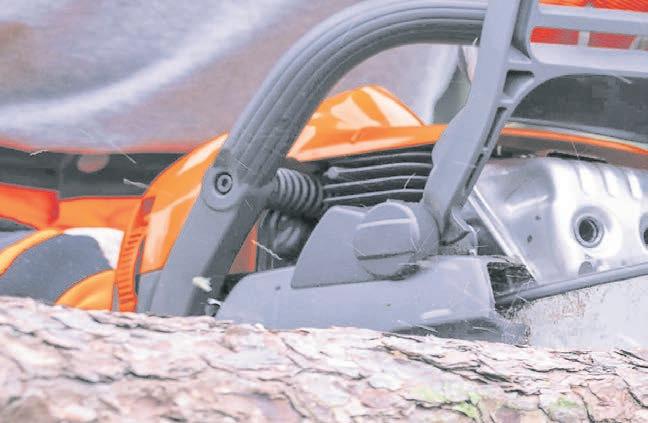


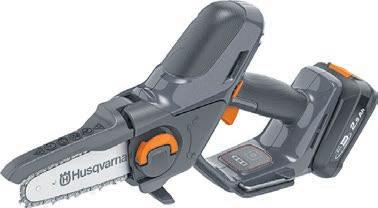
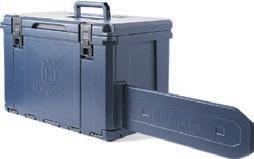













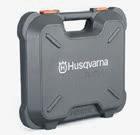













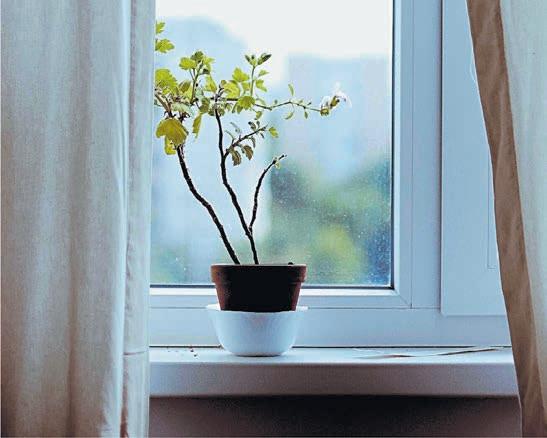





In the last few years, we have seen an even greater number of curtain fabrics being made from 100% recycled polyester or with a very high percentage of recycled polyester.

“Another increase we have seen is the use of 100% linen sheers, either lined or unlined,” says Sue Bellamy of Bream Bay Curtains and Blinds Ltd.
blinds and sheers can save on energy trying to cool your home.

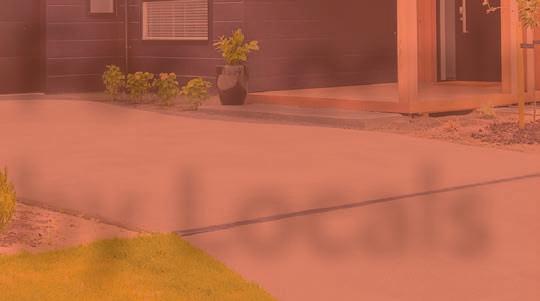
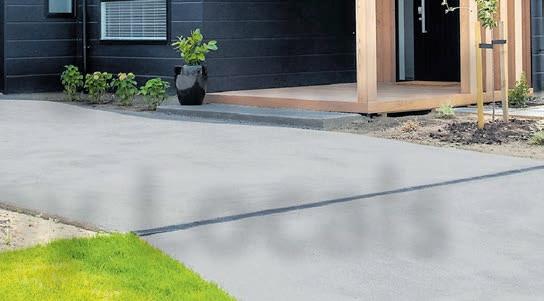

At Versatile, we are incredibly proud to have been creating great homes and buildings for more than 40 years. But we’re even prouder that we’re still 100% Kiwi owned, operated, and focused.

“Clients are making more discerning choices now, and whether this is by chance on ‘a look’, there are now many environmental options available.”
Buying quality roller blinds means they will last longer.
“Here at Bream Bay Curtains and Blinds, we make custom drapes, indoor and outdoor roller blinds (Ziptrak and Zipscreen), PVC and wooden venetians, vertical blinds, honeycomb blinds, custom tracks, indoor shutters (PVC and wooden) and outdoor aluminium shutters.
To discuss your building needs, talk to Versatile Whangarei. 3 South End Ave Whangarei. 09 438 8871.

“Many roller blind fabrics now have 5, 10 or 15-year warranties on the fabrics. Having quality componentry means the roller blinds will last longer, and most will come with five-year supplier warranties.
“We are local and design, measure, order and install the product for you, so we are there every step of the way. Here at Bream Bay Curtains and Blinds we cover residential and commercial properties. If you would like help to order and install your own blinds, please let us know.”

“Shutters are a bit more expensive than venetian or roller blinds. Still, as well as adding a touch of luxury, they last a lot longer than most window furnishings.
For advice on the best window furnishings for your home, give Sue a call on 020 463 2432.


Because we’re from here, we’re for here. We know the local conditions and understand the local regulations. And above all, we’re passionate about building better for Kiwis.

“In the sunny north, the requirement for heavy drapery is not always necessary, but keeping the heat out with sunscreen roller
Sue lives in Waipu and is the owner/ operator of Bream Bay Curtains and Blinds Ltd, covering One Tree Point to Mangawhai. ¢
The fireplace is the heart of the home; it’s no mistake that the word ‘hearth’ also means ‘the family unit’ in the North European Pagan tradition.
Putting a fireplace inside a hut or making a portable hearth that one could construct a yurt or tent around must have made moving out of caves, where there’s no way to let out choking smoke, seem very attractive.
By Roman times, people had worked out how to make a chimney, placing pottery tubes inside the walls of bakeries and forges to keep the smoke away from where people worked and gathered. However, they didn’t cotton on to the possibilities for homes, and living on the upper floors of a Roman apartment building meant having to come down to street level to cook your dinner.
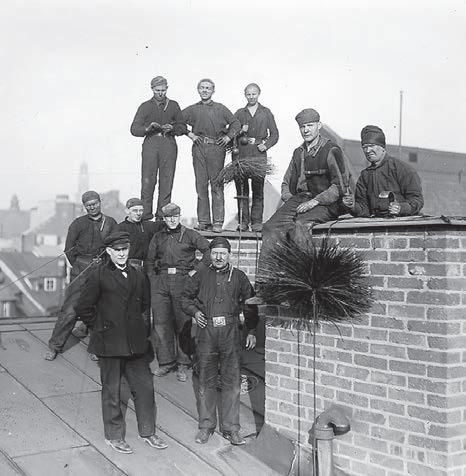
In Britain, the first chimneys were added to castles in the 1100s, and some of them were actually toilets. The idea of a garderobe, or a tube going down through the walls for ablutionary reasons, led to some being modified to go up as well, meaning that multiple levels in the castle had the use of bathroom facilities. Bundles of herbs were lit in these primitive lavatory rooms to get rid of the inevitable smells, and it
was noticed that the smoke went up and away. There’s still a chimney constructed in this style at Conisbrough Castle in Yorkshire, turning the idea upside down and making it possible to have a fireplace right in your bedroom. The first chimney sweeps were likely employed in industry, not around the house. Ore smelters knew that the




fumes from some of their work were toxic, so they would build immensely long, nearly horizontal chimneys leading far away from the workshop and the whole town. Some could be kilometres in length, and they would develop a build-up of valuable mineral deposits. Chimney cleaning crews were out to scrape up these valuables long before the era of Victorian youngsters pressed into service to scrub soot.
Today, it’s adult professionals who manage chimney sweeping duties, and their most common task is to ensure that soot, nesting birds and other debris are removed from the flues of people’s homes. With vacuum cleaners, modular brushes and plenty of equipment to keep the job clean and safe, they are an important part of ensuring your fireplace is ready for winter. For many homeowners, having the family fireplace checked out by the experts is also a
requirement set by insurance providers. So, book in quickly and beat the rush as temperatures drop. ¢








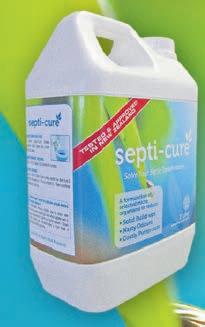













With the temperatures getting cooler and the presence of rain, people should start preparing for the winter by updating and restocking emergency kits.
Families should ensure their home emergency kits are stocked with useful items as winter approaches. For those who already have one in place, it is best to sort through and check expiry dates on items like medication and food items. While tinned foods are known for their impervious nature, checking their condition is advisable. Researching certain canned goods’ shelf-life can give you an idea of when to replace items.

Households should also have enough water to last at least three days. Dried food such as rice or pasta are long-lasting and good bulk fillers.
Sometimes, manufacturers put a use-by date on the cans, but there are telltale signs that don’t require opening their contents. One way to determine if the canned food has spoilt is if the tin begins to bulge outwards or on the lids or has excess rust on it. People with specific dietary needs should be catered for, too.
Once the food products have been checked, decide

if a camping stove is needed, as some food may need to be cooked. The cooker may also need gas, so have a good stock on hand.
Check what first aid products and specific medical items like insulin pens need to be replaced and restock them. For families who don’t have one, they can be purchased online and come in various sizes. Toilet paper and camping toilets are another necessity, or large plastic buckets can be used.
Keep spare clothes, raincoats, work gloves, N95 masks and shoes in the kit, too. Ensure
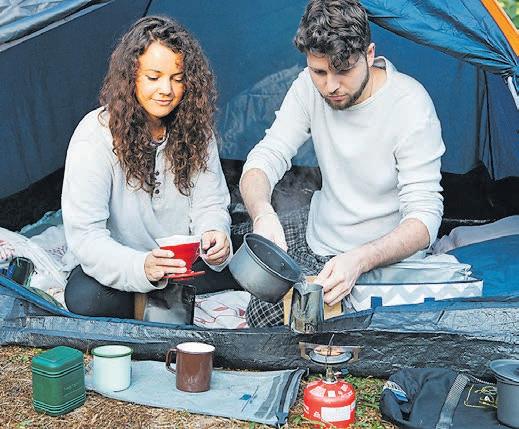
the garments in the kit are dry, clean and still fit. Blankets and tents are other useful objects to have and can provide your family with warmth in the case of a disaster.
It is also good to go through the emergency plan so everyone knows what is happening. A refresher is useful to remind everyone in the household what they should do, where they should go and emergency contacts. ¢






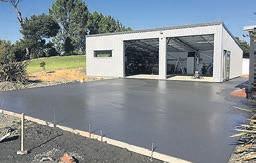

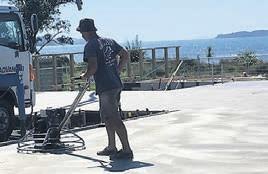





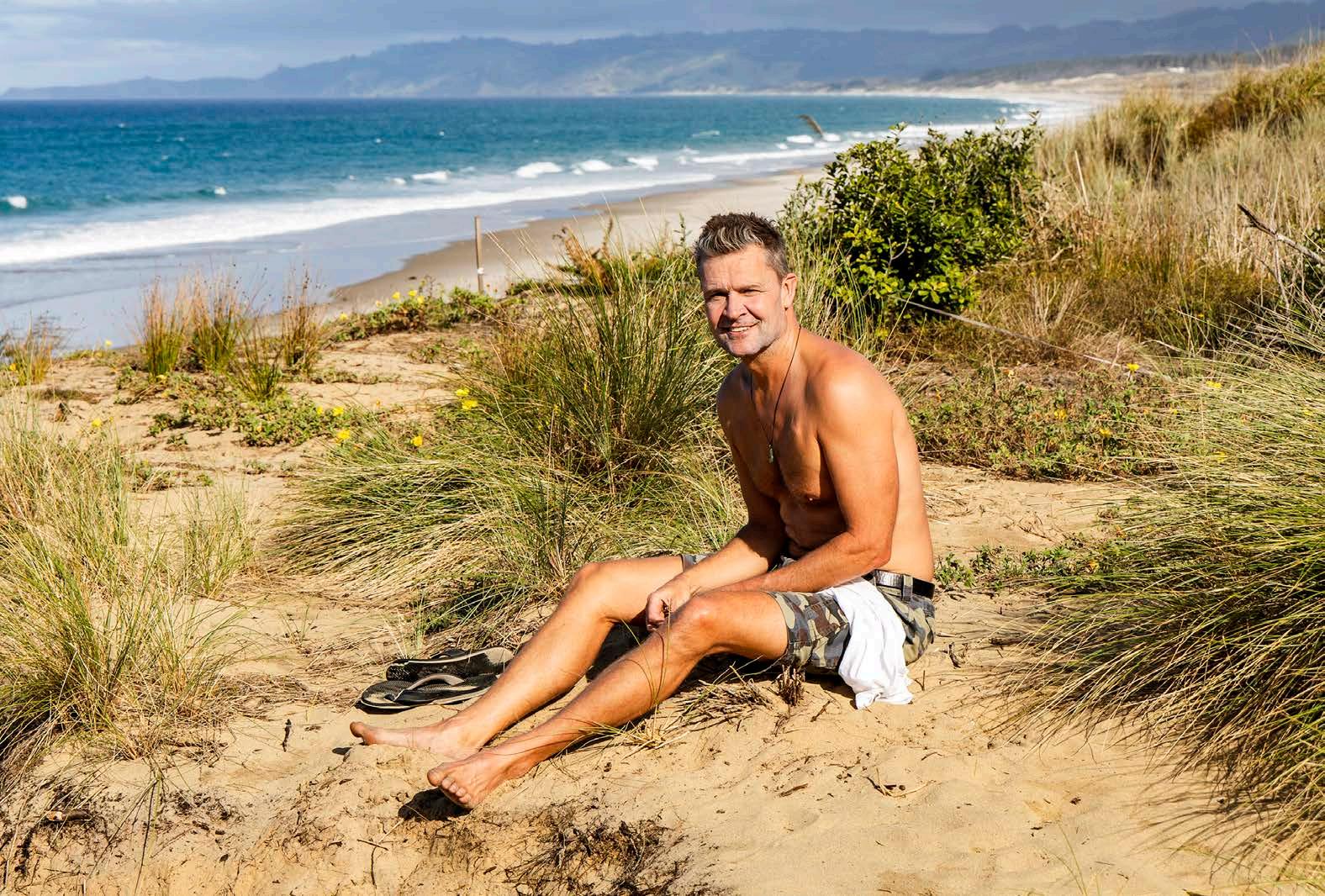
Simon Soulsby is forever grateful to the Northland Rescue Helicopter, Mangawhai Surf Life Saving Club and local emergency services for keeping him alive during a heart event while surfing at Mangawhai Heads in December 2020.
“I was born and raised in the UK in little seaside towns and love the ocean,” says Simon.
“After a gap year, I returned to the UK three years later. My friends had graduated from university, so I joined the air force as an emergency services firefighter for six years.
“I came to Christchurch 23 years ago after leaving the military and moved to Auckland 13 years ago with my wife
Heads bar as the sun was coming up at 5.30am. We headed out and had a beautiful paddle out through the estuary. Everything was perfect, including the waves.
Simon’s heart had gone into VT arrest.
“VT arrest is where your heart’s rhythm spirals. For me, it lasted two hours. We thought I was having a stroke. Mark had to get me to shore, but we had to go around the point.”
Mark removed his leg rope and got Simon to it while he towed him in.
“I had no strength, and Mark paddled and paddled. The beach break was a straight line with no way through. It took
“A few minutes later, it was worse. I was struggling to lift my head out of the water or off the board”
Melissa. I surf whenever I can, often at Mangawhai, Forestry or Te Ārai beaches.”
Simon and Melissa have two children, and he has a very busy career.
“Getting out on the water is important to me. My air force medical training emergency first aid is very loose, so on the fateful day in December 2020, whilst I knew what was happening, I didn’t really know what was happening.
“It was a beautiful day, and I met my mates to surf off the Mangawhai
“I took a bit of a tumble and paddled back to catch another wave but began feeling strange. Through my multisport experiences, I thought the feeling was what’s called bonking (in exercise talk), which you sometimes get when your body goes into having ‘had enough’ mode, and you struggle to keep going.
“With an overwhelming feeling, I realised it wasn’t that. I couldn’t move that well, so I called out to a mate and told him I’d let him know if I got worse.
“A few minutes later, it was worse. I was struggling to lift my head out of the water or off the board, and another friend, Mark Redgrave, came to my side.
“I said I needed help as I couldn’t move my arms, and my face was drooping.”
30 minutes to get to the beach, weaving diagonally through the closeouts from the head, taking us 300 metres away from the lifeguard hut.
“If I fell off, it’s highly likely I would have drowned. By a miracle, we got to knee-deep water, and I recall the sense of helplessness as Jessica Costello, the senior lifeguard, ran over and got me into the quad and to the lifeguard hut.
“A local doctor, Julia Carr, took over and 45 minutes in I was saying the

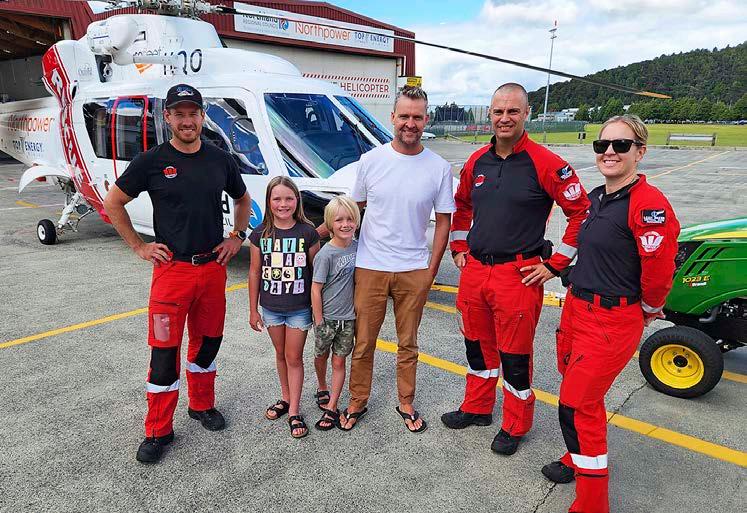


“I took my children to say thank you to the chopper crew so they could see who saved my life. It saddens me that not many people who have needed their help return to thank them”
classic lines you hear in movies, like ‘Tell Melissa I love her, keep an eye on her and the kids for me’. Mark said I could tell them when I got home.
“I could hear Julia and Jess saying they couldn’t find a pulse, and there was no blood pressure. My heart was in a rhythm of VT arrest at 250–300 beats a minute.
“Two ambulance crews arrived, but Julia insisted on the rescue chopper. Twenty minutes later, I heard the chopper blades, but a bunch of cars had parked on the landing pad, and it was a nightmare to find the owners.
“Suddenly, two angels appeared — chopper paramedics Leah and Jarrod. They suggested putting me to sleep and restarting my heart with a shock to return it to its proper rhythm. I’d been in the rhythm for so long that it was just a matter of time before it would stop or give up. Suffice to say, I agreed.”
Simon was flown to Auckland Hospital with Mark beside him.
“While I was in the chopper, I accepted I could die. We landed in Auckland with Melissa waiting. After a week in critical
care, the MRI found scar tissue on my heart, which explained why it went into arrest.
“They implanted a cardioverter defibrillator into my chest. It senses if your heart is arresting and shocks it back to the correct rhythm. They cut your chest above your pectoral muscle and insert something half the size of a cellphone with wires down your veins into your heart chambers. They screw them into the inside wall of your heart valves.
“I spent Christmas in hospital but was thankful to be alive. I vividly recall a beautiful room with a view of the lake, out over the sea to Rangitoto at sunrise and thinking how incredibly blessed I was because the day before I was in a critical state.
“Someone brought me a cup of tea, and I felt blessed to be alive, and have thought that ever since.
“I lead a very busy, corporate life and occasionally find myself agitated and stressed. So I catch myself and visualise that sunrise because it changed me. I now appreciate life and don’t stress
about what I used to. At the end of the day, it’s just stuff.
“My surgeon suggested I avoid surfing and strenuous exercise, which devastated me, but in time with my specialist assessing my heart, he allowed me to surf again but taking it easy.”
Now, Simon avoids big waves and never surfs alone, ensuring the person he is with can get him to safety if necessary.
“My story is just one story. Other survivors have far worse experiences. It’s a reality check and if I’m in a boardroom having a challenging conversation, I remember that it’s easy compared to lying there thinking I’m dying.
“I’m incredibly blessed to be alive and play with my kids, be with my wife and pick up the phone to talk to anyone I want. My kids are young and didn’t realise how serious things were at the time. Mark had phoned Melissa from the beach telling her I’d had an event.
“My life has changed. I used to bike 30km daily and was a very avid fitness
enthusiast. I now limit exercise. They say I was very lucky that I was super fit because that’s why my heart carried on.
“I frequently exercise again, but now walk, jog and do a little bit of biking and surfing.
“The rescue chopper crew were fantastic. I can’t praise them enough. Knowing and understanding through my military experiences what is involved, I know what they go through.
“Leah and Jarrod are seasoned veterans, and I often wonder why I didn’t stay in the most rewarding job in the world. You have so much impact on other lives.
“I took my children to say thank you to the chopper crew so they could see who saved my life. It saddens me that not many people who have needed their help return to thank them.
“For me, visiting the team closed that chapter and I can’t thank them, Jessica Costello and Dr Carr, enough. My other unsung hero is Mark Redgrave who stuck his paddle board under his belly and arm and paddled me to safety. I’m so blessed Mark was with me.” ¢
The Wellsford Drama Club is preparing for the upcoming Wellsford’s Got Talent and is calling for people to audition for the show.
“We ran the first competition in 2022, and had a huge response, with standing room only on the night,” says organiser Rachel Ravenscroft.
“It was so good that one of our major sponsors offered more prizes because of all the talent in our community. We believe it is important to showcase the talent we have in our local area.”
Dancers, singers, a magician and a person doing fire poi were all vying for a winning place.
“Last year, it was nice to see artists from different generations, with different levels of experience and from different places. They got to know one another and encouraged each other as well. Wellsford is where we hold the show, but last year, we had people from Mangawhai, Pākiri and beyond.
“The show is not so much for professionals, but more for
“This year’s judges will largely be different as we like to spice it up a bit each time”
“It’s a family show, similar to Britain’s Got Talent, and anything goes. We’d love to see some groups come forward this year for auditions. It’s a great time to have some fun and try out performing in front of an audience.
“It’s a really encouraging time. At the auditions we give the contestants pointers on what to wear, how to do their makeup and other tips because you have to go over the top when you have stage lights in your face.
amateur people from 12 years old to come and have a go. Our judges have a lot of fun, and Roger Farr will be joining us again this year with our other two judges.


“This year’s judges will largely be different as we like to spice it up a bit each time. We had singer-songwriters do original songs, and we are hoping folks will come out of hiding from around the regions and show us what they have. You never know you might be a winner.

“Contestants perform, and from there, we narrow it down to the top few who will perform again to battle it out for the number one spot, so there is the chance to perform two totally different styles of performance on the night.”

Wellsford’s Got Talent is set for Saturday, May 11. To audition for the show, email wellsfordsgottalent@gmail. com or follow the Wellsford Drama Club Facebook page for more information and tickets. ¢


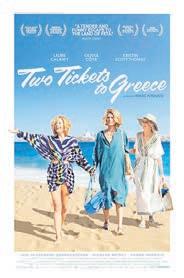

ACROSS: 1 Diagram, 4 On the cards, 9 Theatre, 13 Numb, 14 Breeze, 15 Poetic, 16 Damages, 19 Motionless, 20 Squadron, 21 Added, 24 Sleuth, 25 Afford, 27 Dixieland, 32
Ticket, 63 Grumbled, 66 Disparage, 68 Annoys, 69 Intent, 73 Sieve, 74 Boastful, 76 Babysitter, 81 Strides, 82 Recede, 83 Stoops, 84 Beau, 85 Appease, 86 Headstrong, 87 Artiste.
DOWN:







